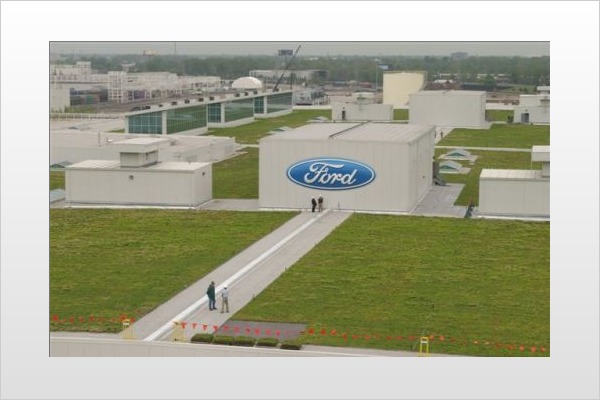
Ever wonder how friendly (or not) to the environment the production of a hybrid versus a pickup truck is? Or what happens to your beloved set of wheels when it's time to go to the junkyard? How about what steps you can take to minimize the hurt we're putting on the world we live in? We imagine that you'll be surprised, pleasantly and otherwise, to what we discovered while digging for answers to those questions.
Birth In terms of vehicles, one overlooked aspect of "being green" is the manufacturing process. We tend to just think of the end product, the car itself. Although the Toyota Prius hybrid is commendable in that it gets high fuel economy and runs extremely clean, its battery pack has been produced at a site that, in the past, was not exactly known for being green.
The nickel used in the Prius' batteries is sourced from a mining plant in Ontario, Canada. Decades ago, poisonous sulfur dioxide fumes spewing out of the factory killed nearly all the surrounding vegetation, giving the once-lush landscape a barren, rocky and otherworldly appearance. In fact, it so resembled the moon's landscape that NASA astronauts used it to test moon buggies. However, the plant has since cleaned up its act, long before Toyota started using it as a supplier, cutting its sulfur dioxide emissions by over 90 percent and planting millions of trees.
Consider Ford's F-150. The truck may guzzle gas and spew emissions more harmful than the Prius, yet its River Rouge, Michigan, assembly plant is actually quite friendly toward the environment thanks to its "living roof" and several energy-saving technologies. Measuring more than 10 acres, the roof is literally green, as it is covered with Sedum plants that filter rainfall (storm water) and convert carbon dioxide to oxygen. Solar panels help provide energy and hot water for the plant. Surrounding the factory are more than 100,000 flowering perennials and shrubs in addition to hundreds of trees.
According to the EPA, emissions from U.S. factories and automobiles are less than half of what they were in 1970, an amazing statistic given the far greater number of vehicles produced and on the road today. Major contributors to that feat are the switch to unleaded gasoline and the computer age, which has allowed more precise fuel metering and less wasteful production methods.
Automakers are also increasing their use of recycled materials in new-car production. Ford uses recycled material for its Escape's cloth seating, while Mazda and Toyota recycle used bumpers to make components of new ones. And car makers have been doing this for years — back in 2004 Cadillac saved 2,000 scrap tires from landfills by using 50 percent recycled tire rubber for the radiator side baffles of the Cadillac SRX.
Life This is what we relate to most — the vehicles living on the roads and in our driveways. If you're driving a hybrid, this is where all the environmental glamour is. It's also where you gain satisfaction by using much less fossil fuel while keeping harmful emissions to an absolute minimum. We have many articles covering the different kinds of alternative fuels and information on enviro-friendly cars, such as the EPA's new SmartWay guide to green cars. Suffice it to say that using less of a finite resource (oil) is great, but the manufacturing process for these earth-friendly vehicles should also be in line with the whole "keep it green" philosophy.
Death — and reincarnation So what happens when it's time to replace the battery pack in that hybrid? First off, Toyota and Honda claim that their battery packs are good for "the life of the car" and Toyota has tested its own battery for 150,000 miles with no degradation. Still, cars live pretty long lives nowadays, so what if you have to replace the battery? Or what do you do with it when the car's life is indeed over?
Both Honda and Toyota have a recycling program in place for those battery packs. Everything from the precious metals to the plastics and the wiring is recycled. Toyota even goes so far as to put a phone number (for recycling information) on each battery and pays dealers $200 for each battery pack.
But what about the rest of the car (be it a hybrid or otherwise) when its service life is over? What happens to all that steel, plastic, rubber and vinyl? The good news is that over 75 percent (by weight) of a given car's materials are recyclable. And almost 100 percent of the metal from junked cars is actually recycled, mostly for the production of new cars. Plastics are more complex, due to the large variety used in a typical car. But more and more plastics are being recycled as new technologies are better able to sort them out after pulverization. The latest methods are able to separate the different types automatically at a rate of 1,000 pounds an hour. Ten percent of the plastic in a new Mini Cooper is comprised of recycled material, and some carmakers use old carpeting in the creation of fan assemblies.
According to Ward's Motor Vehicle Facts and Figures, at least 84 percent of an average car's material content gets recycled. As incredible as it seems, automotive recycling ranks as the 16th largest industry in the United States. Recycling those vehicles provides enough steel to make nearly 13 million new cars, while also providing jobs for 46,000 people.
What can you do? Other than buying a car that's environmentally responsible, here's how you can minimize your automotive impact on the environment.